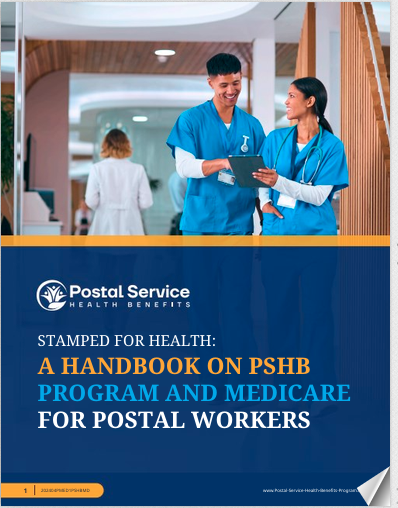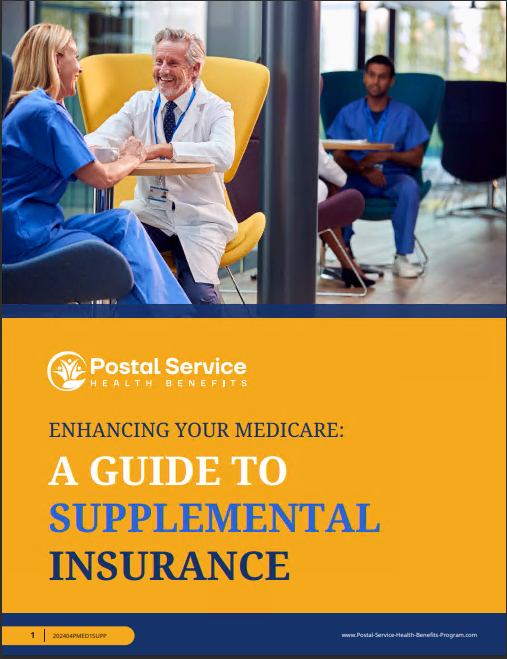Key Takeaways
-
The transition from FEHB to PSHB is already in motion, and knowing what to expect can save you from any last-minute surprises.
-
Understanding eligibility, enrollment timelines, Medicare integration, and plan options will help you make informed choices about your health benefits.
What You Need to Know About the PSHB Transition
If you’re a Postal Service employee or retiree, you’re probably hearing a lot about the switch from the Federal Employees Health Benefits (FEHB) Program to the Postal Service Health Benefits (PSHB) Program. This change officially takes effect on January 1, 2025, but there are a few things you need to do before then to ensure a smooth transition.
PSHB is designed specifically for Postal Service workers and retirees, and while it keeps many aspects of FEHB, there are some key differences. Let’s walk through the four main steps you need to take to make sure you’re ready. We’ll also cover additional considerations like dependents, costs, and ways to maximize your benefits.
1. Check Your Eligibility and Coverage Status
Not everyone will need to take immediate action, but everyone should verify their eligibility to avoid coverage issues. If you’re a current Postal Service employee, retiree, or eligible family member, you’ll likely be covered under PSHB. However, there are a few exceptions:
-
If you’re covered under a family member’s FEHB plan, you can continue that coverage instead of switching to PSHB.
-
Annuitants and family members retired before January 1, 2025, are exempt from the new Medicare Part B enrollment requirement.
-
If you’re already enrolled in Medicare Part B, you’re all set for the new PSHB rules.
Additionally, coverage eligibility extends to legally married spouses, dependent children under 26, and certain disabled dependents. If your family situation has changed recently, such as through marriage, divorce, or adoption, you should review your status to ensure correct enrollment.
What You Should Do Now
-
Review your current FEHB coverage.
-
If you’re unsure about eligibility, check with your HR department or a licensed agent listed on this website.
-
Keep an eye out for official PSHB communication from the Office of Personnel Management (OPM) and the Postal Service.
-
If you have dependents, verify that they are correctly listed under your plan.
2. Understand Enrollment Deadlines and Open Season
One of the biggest concerns with the PSHB transition is making sure you enroll on time. Missing deadlines can result in gaps in coverage or even loss of benefits. Here’s what you need to know:
Important Dates
-
November 11 – December 13, 2025: This is the PSHB Open Season, during which you can select your new health plan.
-
January 1, 2025: All active Postal Service employees and retirees will automatically transition to a PSHB plan if they don’t opt out.
-
Special Enrollment Period for Medicare: If you’re required to enroll in Medicare Part B due to the PSHB transition, you’ll have a special enrollment window to avoid late penalties.
-
Annual Enrollment Periods: Each year, you will have the opportunity to review and update your coverage, so if you are unsatisfied with your initial selection, you can make changes in the following Open Season.
What You Should Do Now
-
Mark your calendar for Open Season.
-
Compare PSHB plan options to see which one best fits your needs.
-
Make sure your contact information is up to date to receive enrollment notices.
-
Understand how life events like marriage, birth, or retirement can affect future enrollment.
3. Get Ready for Medicare Coordination (If Eligible)
A major shift with PSHB is the requirement for Medicare-eligible annuitants and family members to enroll in Medicare Part B. This affects anyone who turns 65 on or after January 1, 2025.
How Medicare and PSHB Work Together
Once you’re enrolled in Medicare Part B, your PSHB plan will coordinate benefits, which often leads to:
-
Lower out-of-pocket costs for medical services.
-
Better coverage for hospital stays and doctor visits.
-
Automatic enrollment in a Medicare Part D Employer Group Waiver Plan (EGWP) for prescription drug coverage.
Many PSHB plans offer additional incentives for enrollees who coordinate with Medicare, such as reduced deductibles and enhanced benefits. Understanding how these plans work together can help you maximize your healthcare coverage.
What You Should Do Now
-
If you’re under 65, plan ahead for when you’ll need to enroll in Medicare Part B.
-
If you’re already enrolled in Medicare, check how your PSHB plan will integrate with it.
-
If you’re close to Medicare eligibility, consider speaking with a licensed agent listed on this website to go over your options.
-
Research whether your preferred doctors accept Medicare and are part of the PSHB plan network.
4. Compare PSHB Plan Options to Make an Informed Decision
One of the most important steps in this transition is choosing the right PSHB plan. Since PSHB will have different plan options than FEHB, take the time to compare:
-
Premiums and Out-of-Pocket Costs – Look at deductibles, copayments, and coinsurance rates.
-
Provider Networks – Ensure your preferred doctors and hospitals are covered.
-
Prescription Drug Coverage – Confirm that your medications are included in the plan’s formulary.
-
Additional Benefits – Some plans may offer extra perks like wellness programs, telehealth services, and vision or dental coverage.
-
HSA and FSA Eligibility – Some PSHB plans allow you to contribute to a Health Savings Account (HSA) or Flexible Spending Account (FSA), which can help cover medical expenses with pre-tax dollars.
What You Should Do Now
-
Look at plan comparison tools provided by OPM and the Postal Service.
-
Make a list of your healthcare needs and match them to the best plan.
-
If you need help, reach out to a licensed agent listed on this website for expert guidance.
-
Consider factors like chronic conditions, anticipated medical costs, and family needs when selecting a plan.
Preparing for a Smooth Transition
Switching from FEHB to PSHB may seem overwhelming, but staying informed and taking action early can make the process much easier. The key is understanding your eligibility, knowing the deadlines, planning for Medicare coordination, and selecting a plan that fits your healthcare needs.
Take the time to thoroughly review your options, speak with a professional if necessary, and ensure that you and your family have the best possible coverage.
Remember, you don’t have to navigate this alone. A licensed agent listed on this website can help you review your options and ensure you’re making the best choice for your health and budget.






